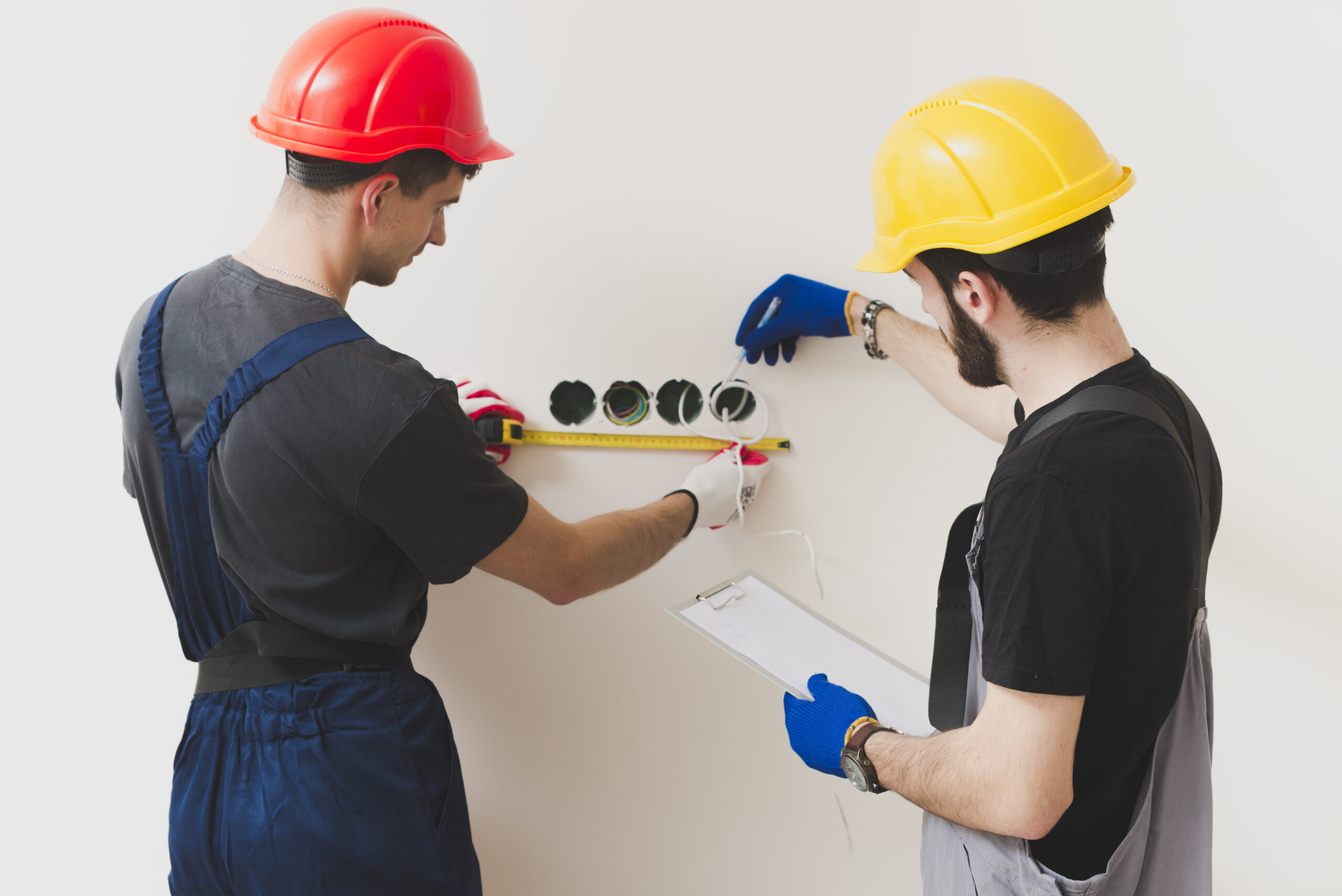Tips for Finding Reliable Lead Paint Inspectors in NYC
In New York City, ensuring your home or building is free of lead paint is crucial for health and safety, especially in older structures. Lead paint exposure can lead to serious health issues, particularly in children and pregnant women. This article provides comprehensive guidance on finding reliable lead paint inspectors in NYC, from understanding certification to navigating legal requirements and knowing what to expect during inspections.
Understanding the Importance of Lead Paint Inspection
Why Lead Paint is a Health Hazard
Lead paint, once common in homes, can deteriorate over time, creating lead dust and chips that are easily inhaled or ingested. Lead poisoning can cause developmental delays in children, neurological damage, and even fatal consequences if exposure is significant. For these reasons, NYC has strict regulations regarding lead paint, especially in homes with young children.
NYC Regulations on Lead Paint Inspections
New York City has some of the most stringent regulations in the U.S. regarding lead paint. Local Law 1 of 2004 requires landlords to conduct regular inspections for lead hazards, particularly in buildings constructed before 1960. Compliance with these laws is essential, as failure to do so can result in hefty fines and penalties.
Identifying Licensed and Certified Inspectors
The Role of EPA Certification
When looking for a lead paint inspector, ensure they hold certification from the Environmental Protection Agency (EPA). The EPA mandates that inspectors and risk assessors undergo extensive training to become certified in identifying lead hazards. Hiring a certified professional guarantees the use of approved methods and ensures the inspector has the necessary expertise.
Verifying NYC Department of Health Licenses
In addition to EPA certification, NYC also requires lead paint inspectors to be licensed by the city’s Department of Health. You can verify their license through the Department of Health’s online database, which helps ensure that you are hiring someone who is fully qualified and compliant with local laws.
What to Expect from a Lead Paint Inspection
Types of Testing Methods
A thorough lead paint inspection involves a variety of testing methods, including X-ray fluorescence (XRF) analysis, which can detect lead in multiple layers of paint without damaging the surface. Surface wipe tests may also be used to check for the presence of lead dust in the environment.
The Inspection Process Step-by-Step
The inspection process typically starts with a visual examination, followed by surface testing of suspect areas. After the inspector identifies potential lead paint hazards, they will create a detailed report that outlines the findings and suggests the best course of action for remediation.
Common Pitfalls in Choosing an Inspector
Avoiding Unlicensed Inspectors
One of the biggest mistakes homeowners make is hiring an unlicensed or uncertified inspector. Not only is this illegal, but it can also result in inaccurate inspections and potential fines. Always confirm the inspector’s credentials before hiring.
Checking for Complaints and Violations
A quick online search can reveal any past complaints or violations associated with a lead paint inspector. NYC’s Department of Consumer Affairs often has records of licensed professionals and their standing, which can provide insight into their reputation and reliability.
How to Research Reliable Lead Paint Inspectors
Using Online Resources and Reviews
Many platforms, such as Yelp or Angi (formerly Angie’s List), offer reviews from previous clients that can help you gauge the reliability and professionalism of a lead paint inspector. Pay attention to both positive and negative reviews, and look for patterns that may indicate consistent service quality.
Asking for References
A trustworthy inspector should be more than willing to provide references from past clients. These references can give you first-hand insights into their work quality, timeliness, and communication skills.
Comparing Costs and Services
Understanding Pricing Models for Lead Paint Inspections
The cost of lead paint inspections in NYC can vary based on several factors, such as the size of the property, the type of testing required, and the inspector’s credentials. Some inspectors charge a flat fee, while others may have an hourly rate. It’s crucial to understand what’s included in the price, such as the report, follow-up inspections, or additional testing if lead is found.
Balancing Cost and Quality
While it’s tempting to opt for the cheapest inspector, remember that experience and thoroughness are critical when it comes to health and safety. A more expensive, highly qualified inspector may provide a more comprehensive service and help you avoid future costs related to inaccurate inspections or lead remediation.
Questions to Ask Before Hiring an Inspector
Important Questions on Inspection Methods
Before hiring a lead paint inspector, ask about the specific methods they use for testing. Reliable inspectors should use modern and accurate techniques such as XRF analyzers, which are non-invasive and precise. Understanding how they conduct the inspection will help ensure that no potential hazard is overlooked.
Inquiries about Experience and Certification
Experience is vital in lead paint inspections. Ask how many years the inspector has been in business and whether they have experience working with homes similar to yours. Also, confirm their certifications and ensure they are up to date with the latest regulations and standards in NYC.
Timeframes for Lead Paint Inspections in NYC
Average Duration of Inspections
A typical lead paint inspection for an apartment or small home in NYC can take anywhere from 1 to 4 hours, depending on the size of the property and the number of surfaces to be tested. Larger properties or those with more complex layouts may require additional time.
Understanding the Report Timeline
After the inspection is complete, most inspectors will deliver a comprehensive report within a few days. However, the exact timeline may vary depending on the company or the complexity of the findings. Make sure you ask upfront when you can expect to receive the results and whether they provide digital copies for easier access.
Importance of Getting a Detailed Inspection Report
Key Elements of an Inspection Report
A detailed inspection report should include the locations of all lead hazards, the testing methods used, and the inspector’s recommendations for remediation or risk reduction. The report should be clear and easy to understand, allowing you to take immediate action if needed.
Interpreting Inspection Findings
Lead paint inspection reports can sometimes be technical and complex. Ask the inspector to walk you through the findings, explaining any areas of concern. Understanding these results will help you make informed decisions about how to address lead hazards and protect the health of your household.
What to Do if Lead Paint is Detected
Next Steps After a Positive Lead Paint Result
If lead paint is found during the inspection, you’ll need to take immediate action to mitigate the risks. Depending on the severity, you may need to hire a certified lead abatement contractor to remove or encapsulate the lead paint. Make sure to follow all local regulations to avoid fines and penalties.
Lead Paint Removal vs. Encapsulation
There are two primary ways to address lead paint: removal or encapsulation. Lead paint removal involves stripping the paint entirely, while encapsulation seals the paint under a special coating. Each option has its benefits, and the best approach depends on the condition of the paint and the level of exposure risk.
Legal Requirements for Lead Paint Remediation in NYC
NYC Laws on Lead Paint Removal
NYC has strict laws governing lead paint removal, especially in homes where children under six live. Local Law 1 mandates landlords to address lead paint hazards promptly. Failing to do so can result in legal action and hefty fines. Make sure to hire a certified professional who understands NYC’s lead paint regulations and can guide you through the process.
Fines and Penalties for Non-Compliance
Landlords and property owners who fail to comply with NYC’s lead paint laws can face severe penalties, including fines, legal action, and even the forced vacating of properties. Ensuring compliance not only protects tenants but also safeguards property owners from costly legal issues.
Preventing Lead Paint Exposure in Your Home
Maintaining a Lead-Safe Environment
Preventing lead exposure starts with regular maintenance. Ensure that painted surfaces are in good condition, particularly in high-risk areas such as windows, doors, and walls. Regular cleaning to remove dust, especially in older homes, can also reduce the risk of lead exposure.
Educating Tenants and Residents
If you’re a landlord or property manager, it’s essential to educate tenants about lead paint hazards. Providing them with information on how to spot peeling paint and the importance of reporting any signs of deterioration can help maintain a lead-safe environment.
The Role of Insurance in Lead Paint Inspections
Understanding Liability Coverage
Some insurance policies provide coverage for lead paint-related issues, particularly if the property has been inspected and found to have lead hazards. Check with your insurance provider to see if your policy includes this coverage, as it can protect you from financial liability if lead exposure occurs.
Insurance for Lead Paint Remediation
In cases where lead paint remediation is necessary, certain insurance policies may cover the costs of removal or encapsulation. However, these policies vary widely, so it’s essential to review your coverage carefully and discuss any specific needs with your insurer.
Common Myths About Lead Paint Inspections
Myth vs. Reality: What Lead Paint Inspectors Really Do
A common myth is that lead paint inspections involve extensive destruction of walls or surfaces. In reality, modern testing methods like XRF technology allow inspectors to detect lead without damaging the property. Understanding the reality of these inspections can help alleviate concerns.
Busting Misconceptions
Another misconception is that lead paint is only dangerous if visibly peeling or cracking. In fact, lead dust, which can be invisible, poses just as much risk as peeling paint. Regular inspections and testing are essential, even if surfaces appear intact.
FAQs on Lead Paint Inspections in NYC
What is the cost of a lead paint inspection in NYC?
The cost typically ranges from $300 to $600, depending on the size of the property and the complexity of the inspection.
How often should I get a lead paint inspection?
Lead paint inspections are recommended every few years, especially in older homes or when there’s a change in tenants or residents.
Can I perform a lead paint test myself?
While home test kits are available, it’s always best to hire a certified inspector to ensure accurate and reliable results.
Are landlords required to have lead paint inspections?
Yes, under NYC law, landlords must conduct regular lead paint inspections in homes built before 1960 and where young children reside.
How do I verify if my inspector is certified?
You can check the inspector’s certification through the EPA’s database or the NYC Department of Health’s website.
What happens if lead paint is found during inspection?
If lead paint is detected, you must take steps to mitigate or remove the hazard, often through encapsulation or professional lead removal services.
Conclusion
Finding a reliable lead paint inspector in NYC is crucial for ensuring the safety of your home and complying with local laws. By understanding what to look for in a certified professional, knowing the right questions to ask, and staying informed about the legal requirements, you can make sure your property is lead-safe and avoid potential health risks. Regular inspections and proper maintenance are key to preventing lead exposure and safeguarding the well-being of your family or tenants.






